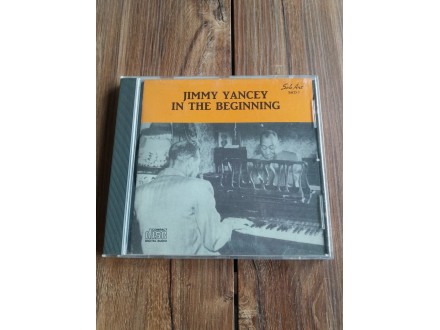Jimmy Yancey - In The Beginning
| Cena: |
| Stanje: | Polovan bez oštećenja |
| Garancija: | Ne |
| Isporuka: | Pošta Post Express Lično preuzimanje |
| Plaćanje: | Tekući račun (pre slanja) Lično |
| Grad: |
Novi Sad, Novi Sad |
Izdavač: Ostalo
Žanr: Bluz, Džez
Poreklo: Strani izvođač
Original, made in USA
Knjizica od 8 str.
Odlicno ocuvano
knjizica 5 Cd 5
Label: Solo Art – SACD-1
Format:
CD, Compilation
Country: US
Released: 1989
Genre: Blues
Style: Piano Blues
1 Jimmy`s Stuff No. 2
2 Rolling The Stone
3 Steady Rock Blues
4 P.L.K. Blues
5 South Side Stuff
6 Yancey`s Getaway
7 La Salle Street Breakdown
8 Two O`Clock Blues
9 Janie`s Toys
10 Lean Bacon
11 Big Bear Train
12 Lucille`s Lament
Phonographic Copyright ℗ – Solo Art
Copyright © – Solo Art
Liner Notes – George H. Buck, Jr.
Producer – Dan Qualey
Part of the Jazz Piano Heritage Series.
James Edwards Yancey (February 20, c. 1895[1] – September 17, 1951)[2][3][4] was an American boogie-woogie pianist, composer, and lyricist. One reviewer described him as `one of the pioneers of this raucous, rapid-fire, eight-to-the-bar piano style`.[3]
Biography
Jimmy Yancey was born in Chicago, Illinois, most likely in 1895.[1] However, at different times he stated 1900 and 1903,[5] and other sources give 1894[3] or 1898.[4] Researchers Bob Eagle and Eric LeBlanc suggest 1901.[5]
His brother, Alonzo Yancey (1897–1944),[5] was also a pianist, and their father was a vaudeville guitarist and singer. By age ten, Yancey had toured across the United States as a tap dancer and singer,[6] and by twenty he had toured throughout Europe. He began teaching himself to play the piano at the age of 15, and by 1915 had gained a sufficient profile to influence younger musicians, including Meade Lux Lewis and Albert Ammons.[2][3]
Jimmy played in a boogie-woogie style, with a strong-repeated figure in the left hand and melodic decoration in the right, but his playing was delicate and subtle rather than hard driving.[6] He popularized the left-hand figure that became known as the `Yancey bass`, later used in Pee Wee Crayton`s `Blues After Hours`, Guitar Slim`s `The Things That I Used to Do`, and many other songs.[7] Yancey favored keys—such as E-flat and A-flat—that were atypical for barrelhouse blues.[2] Distinctively, he ended many pieces in the key of E-flat, even if he had played in a different key until the ending.
Although influential from an early age, Yancey did not record at all in his early career, performing only at house parties and clubs. His first recordings, in 1939, created a considerable stir in blues and jazz circles.[8] He made most of his recordings solo, but later in his career he recorded with his wife, Estelle Yancey, singing, as Jimmy and Mama Yancey.[7] They appeared in concert at Carnegie Hall in 1948,[2] and recorded their first album in 1951, released by Atlantic Records the following year.[2] During World War I, Yancey played baseball for the Chicago All-Americans, a Negro league baseball team. From 1925 to 1950,[5] he worked as a groundskeeper for the Chicago White Sox.[7]
Predmet šaljem nakon uplate na moj tekući račun ili po dogovoru.
Lično preuzimanje je uvek moguce u Novom Sadu po dogovoru,ili na mojoj adresi .
Molim kupce da pre licitacije pitaju sve sto ih zanima, kako bi izbegli eventualne nesporazume.
U slučaju bilo kakvog problema nakon preuzimanja paketa, kontaktirajte me pre davanja ocene kako bi isti pokusali da rešimo.
Ne šaljem pouzećem.
Za prodaju cd-ova : Plastične kutije su zamenjive i njih NE OCENJUJEM! Takodje zadnja strana iza plastike drzaca cd je vidljiva slika, za njih isto ne ide ocena, sve se vidi!
Predmet: 74456037











